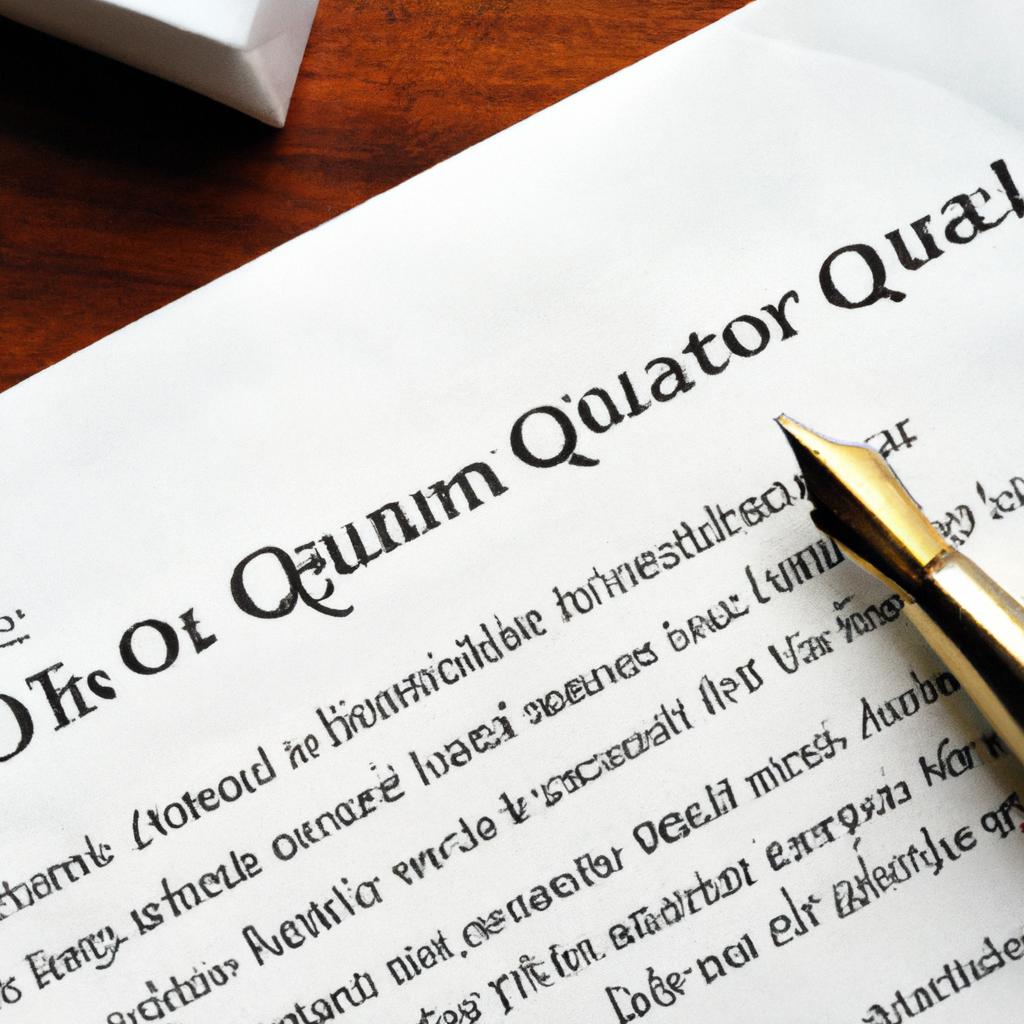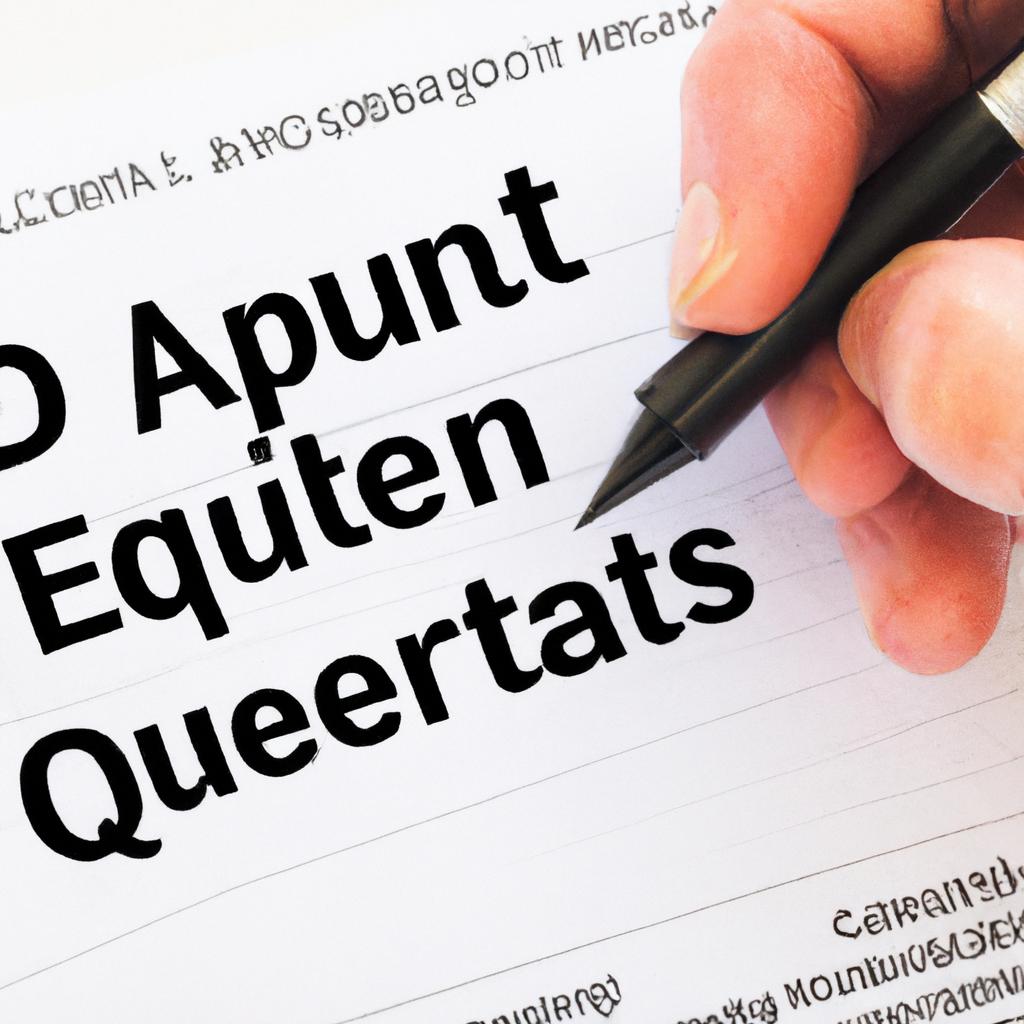Have you found yourself in a situation where you need to transfer ownership of property quickly and efficiently? Quitclaim deeds can provide a simple solution to this common dilemma. In this article, we will guide you through the process of executing a quitclaim deed with ease and precision. As experienced practitioners in estate planning and real estate law, the experts at Morgan Legal Group in New York City are here to assist you every step of the way. Let us help you navigate the complexities of real estate transfers with our comprehensive knowledge and expertise.
Understanding the Basics of a Quitclaim Deed
When it comes to , it is important to recognize that this legal document is commonly used in real estate transactions to transfer ownership of a property. Unlike a warranty deed, a quitclaim deed does not offer any guarantees or assurances regarding the title of the property. Instead, it simply transfers whatever interest the grantor may have in the property to the grantee. This means that if the grantor does not have full ownership of the property, the grantee will not receive clear title.
Before proceeding with a quitclaim deed, it is crucial to consider the following key points:
- **Verification of Ownership**: It is essential to verify that the grantor has legal ownership of the property before executing a quitclaim deed.
- **Potential Risks**: Since a quitclaim deed does not provide any warranties, the grantee may be at risk if there are title issues or undisclosed liens on the property.

Critical Steps to Take Before Drafting a Quitclaim Deed
Before drafting a quitclaim deed, there are several critical steps that you need to take in order to ensure that the process goes smoothly and efficiently. These steps include:
- Research the property: It is important to thoroughly research the property in question to ensure that all necessary information is accurate and up to date.
- Consult with an attorney: It is highly recommended that you consult with an attorney who specializes in real estate law before proceeding with the drafting of a quitclaim deed.
- Gather all necessary documentation: Make sure to gather all relevant documentation, such as deeds, property tax records, and mortgage information, before drafting the quitclaim deed.
Additionally, it is important to consider any potential tax implications that may arise from the transfer of property ownership. By taking these critical steps before drafting a quitclaim deed, you can help ensure a smooth and efficient transfer of property ownership.
| Step | Importance |
|---|---|
| Research the property | Ensure accuracy |
| Consult with an attorney | Legal guidance |
| Gather documentation | Prepare necessary information |

Key Considerations When Filling Out a Quitclaim Deed
When filling out a quitclaim deed, there are several key considerations to keep in mind to ensure the process goes smoothly and legally binding. One important factor to consider is ensuring the deed is accurate and complete. This includes verifying the correct legal description of the property being transferred and double-checking all names and addresses of the parties involved.
- Ensure the deed is accurate and complete
- Verify the legal description of the property
- Double-check all names and addresses of the parties
Another important consideration when filling out a quitclaim deed is to understand the implications of transferring ownership of the property. It is crucial to be aware that a quitclaim deed offers no guarantee or warranty of title, unlike a warranty deed. This means that the grantor is only transferring whatever interest they have in the property, and the grantee accepts the property as-is, with no assurances regarding any potential claims or liens.
- Understand the implications of transferring ownership
- Know that a quitclaim deed offers no guarantee or warranty of title
- Be aware that the grantor is only transferring whatever interest they have in the property

Expert Tips for Executing a Valid Quitclaim Deed
When executing a valid quitclaim deed, it is crucial to follow these expert tips to ensure a smooth and legally binding transfer of property:
- Verify the Property Details: Before preparing the deed, make sure to accurately verify the legal description of the property to be transferred.
- Check for Liens and Encumbrances: Conduct a thorough title search to identify any existing liens or encumbrances on the property that may affect the transfer.
- Use Proper Legal Language: Ensure that the deed includes all necessary legal language and is properly formatted according to state laws.
| Expert Tip | Description |
|---|---|
| Have the Deed Notarized | It is essential to have the deed notarized to make it legally binding. |
| Record the Deed | Once executed, be sure to record the deed with the appropriate county office to officially transfer the property. |
| Seek Legal Advice | If you are unsure about the process, it is advisable to consult with a real estate attorney to ensure the deed is valid and enforceable. |
Q&A
Q: What is a quitclaim deed?
A: A quitclaim deed is a legal document used to transfer someone’s interest in a property without making any guarantees about the title.
Q: When should I use a quitclaim deed?
A: Quitclaim deeds are commonly used in situations where the property transfer is between family members, divorcing spouses, or for clearing up title issues.
Q: How do I fill out a quitclaim deed?
A: To fill out a quitclaim deed, you will need to include the names of the grantor and grantee, a legal description of the property, and any relevant signatures.
Q: Do I need a lawyer to do a quitclaim deed?
A: While it is possible to complete a quitclaim deed without a lawyer, it is always recommended to seek legal advice to ensure the document is filled out correctly and legally binding.
Q: How do I file a quitclaim deed?
A: After the quitclaim deed is signed, it should be filed with the county recorder’s office where the property is located to make the transfer official.
Q: Can a quitclaim deed be reversed?
A: Once a quitclaim deed is signed and filed, it is typically not easy to reverse. It is important to consider all implications before proceeding with a quitclaim deed.
Insights and Conclusions
In conclusion, the process of executing a quitclaim deed may seem daunting at first, but with the right guidance and resources, it can be a straightforward and relatively simple task. Remember to thoroughly research and understand the implications of transferring property ownership through a quitclaim deed before proceeding. By following the steps outlined in this article, you can confidently navigate the process and ensure a smooth transfer of property rights. Good luck on your journey to streamline your property ownership!
 Have you recently inherited or decided to transfer real estate property ownership to someone else? If so, you may have come across the term “quitclaim deed”. This legal document is commonly used in real estate transactions to transfer a property title from one person to another. However, if you’re unfamiliar with the process, it can seem daunting. In this comprehensive and SEO-optimized article, we’ll break down the steps on how to do a quitclaim deed and provide you with all the necessary information to ensure a smooth and hassle-free transfer.
Have you recently inherited or decided to transfer real estate property ownership to someone else? If so, you may have come across the term “quitclaim deed”. This legal document is commonly used in real estate transactions to transfer a property title from one person to another. However, if you’re unfamiliar with the process, it can seem daunting. In this comprehensive and SEO-optimized article, we’ll break down the steps on how to do a quitclaim deed and provide you with all the necessary information to ensure a smooth and hassle-free transfer.
What is a Quitclaim Deed?
A quitclaim deed is a document used to transfer ownership of a property from one party (grantor) to another (grantee). Unlike a warranty deed, which guarantees the grantor’s ownership and defends against any future claims, a quitclaim deed makes no such promises. It simply conveys the grantor’s interest in the property to the grantee, without any warranties or guarantees. This means that the grantee receives whatever interest the grantor has in the property, but it may not necessarily be the full legal ownership.
When to Use a Quitclaim Deed?
Quitclaim deeds are commonly used in situations where the property transfer comes without a monetary exchange, such as a gift or inheritance. They are also used when transferring property between family members, adding a spouse’s name to a property title after marriage, or removing a spouse’s name after a divorce. Quitclaim deeds can also come in handy to correct errors in a property title or as part of a property settlement in a divorce.
Steps to Do a Quitclaim Deed
1. Consult with an Attorney
While not a legal requirement, it’s always wise to consult with an attorney before drafting and executing a quitclaim deed. An attorney can help ensure the document is drafted correctly and that you understand the potential risks involved. They can also advise you on any other necessary documents or filings required by your state.
2. Prepare the Quitclaim Deed
The quitclaim deed document can be obtained from a local real estate attorney or downloaded from a trusted online source. It should include the grantor and grantee’s names and addresses, the property description, and a legal description of the grantor’s interest in the property. You should also include the date of execution and have the document notarized.
3. File and Record the Deed
Once the deed is drafted and signed, it must be filed and recorded in the county where the property is located. Each county may have different specific requirements for recording deeds, so it’s best to check with your local recorder’s office. Any associated fees must also be paid at this time.
4. Notify all Interested Parties
Once the deed is recorded, it’s crucial to notify all interested parties, such as mortgage lenders, banks, or utility companies, of the change in ownership. This is particularly important if there is a mortgage on the property, as the transfer could trigger a due-on-sale clause, requiring the loan to be paid off immediately.
5. Update Property Taxes
After completing the quitclaim deed, it’s essential to update the property taxes to avoid any future complications. The county assessor’s office should be notified of the change in ownership, and you may need to provide a copy of the recorded deed.
Potential Issues with Quitclaim Deeds
While quitclaim deeds are commonly used in real estate transactions, they do come with some potential risks for both the grantor and grantee. Since the deed offers no warranties or guarantees, the grantor may not have legal ownership of the property and may not be able to transfer it as promised. This could result in expensive lawsuits for both parties. Additionally, if the property has any liens or encumbrances, they may not be disclosed in the quitclaim deed, leaving the grantee responsible for them.
Benefits of Doing a Quitclaim Deed
Despite the potential risks, a quitclaim deed can offer some benefits for both the grantor and grantee. For the grantor, it can help quickly transfer ownership without going through the hassle of title searches and other legal processes. It can also help avoid probate court when gifting or inheriting property. For the grantee, it can be a useful tool to add or remove a name from a property title, particularly in the case of a divorce or marriage. It’s also a cost-effective way to transfer ownership without having to go through a traditional real estate transaction.
In conclusion, doing a quitclaim deed can be a straightforward and efficient way to transfer property ownership. However, it’s crucial to proceed with caution and seek legal advice before executing one. By following the necessary steps and ensuring all parties are properly notified, you can ensure a successful property transfer. Remember, the key to a smooth and hassle-free process is to seek professional guidance and be well-informed. Good luck!

